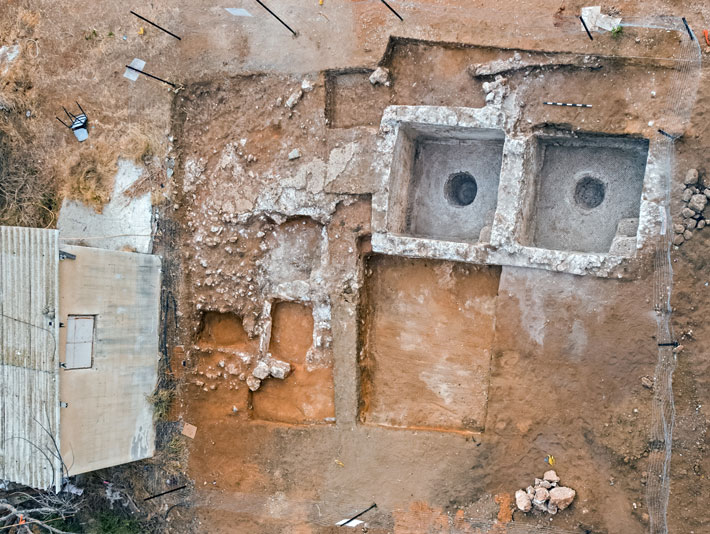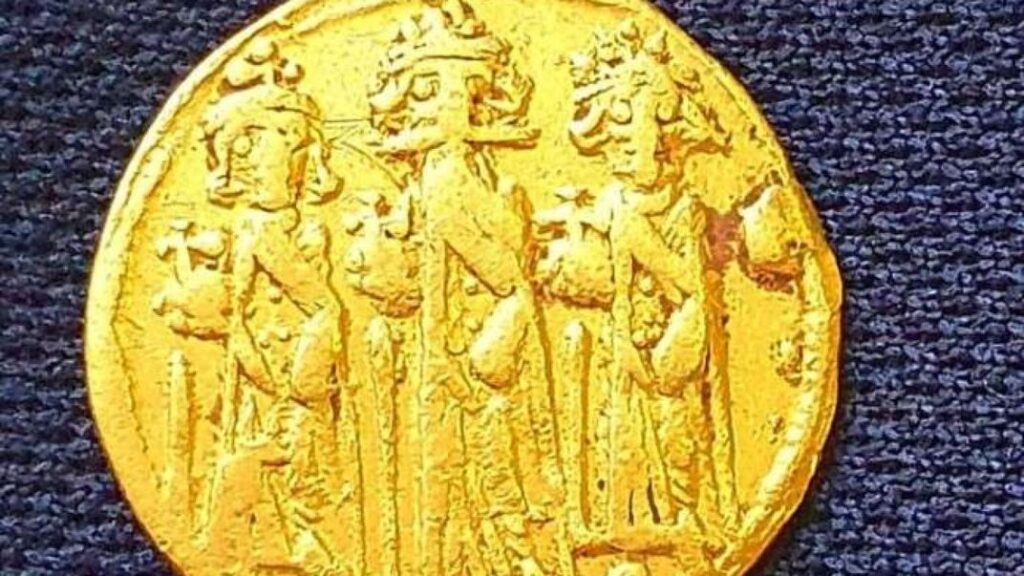1,500-Year-Old Industrial Agriculture Site Unearthed in Israel
Archaeologists in Israel have discovered a wine press, a rare gold coin and other artefacts linked to a settlement that stood in what’s now the Tel Aviv suburb of Ramat Ha-Sharon some 1,500 years ago.

Paved with a mosaic floor, the large wine press is a key indicator that the site was home to agricultural-industrial activity during the Byzantine period, reports i24 News. Archaeologists from the Israel Antiquities Authority (IAA) also found the foundations of a large structure that may have served as a warehouse or farmstead.
“Inside the buildings and installations, we found many fragments of storage jars and cooking pots that were evidently used by labourers working in the fields here,” says excavation leader Yoel Arbel in a statement. “We also recovered stone mortars and millstones that were used to grind wheat and barley and probably also to crush herbs and medicinal plants.”
Arbel adds that most of the stone implements were made of basalt from the Golan Heights and Galilee, located 50 to 100 miles northeast of Ramat Ha-Sharon.
As Stuart Winer reports for the Times of Israel, the coin was minted in 638 or 639 C.E. under the authority of Byzantine emperor Heraclius. One side shows the emperor and his two sons.
The hill of Golgotha in Jerusalem, identified as the site of the crucifixion of Jesus in Christian gospels, appears on the reverse. Someone scratched an inscription, likely the name of the coin’s owner, onto its surface in Greek and possibly Arabic, according to Robert Kool, a coin expert with the IAA.
“The coin encapsulates fascinating data on the decline of Byzantine rule in the country and contemporary historical events, such as the Persian invasion and the emergence of Islam, and provides information on Christian and pagan symbolism and the local population who lived here,” says Kool in the statement.

Among the discoveries made at the site was a bronze chain that may have been used to suspend a chandelier—an artefact typically found in churches, writes Rossella Tercatin for the Jerusalem Post.
Other items dated to the early Islamic period, which began in the seventh century C.E. These included oil lamps, a glass workshop, and a warehouse with large vessels used to store grain and produce.
“In this period, people were not only working at the site but also living there, because we discovered the remains of houses and two large baking ovens,” says Arbel in the statement.
Archaeologists think the site remained in use until the 11th-century C.E.
The team conducted excavations in advance of the construction of a neighbourhood at the site.
“This is the first archaeological excavation ever conducted at the site, and only part of it was previously identified in an archaeological field survey,” says IAA Tel Aviv District archaeologist Diego Barkan in the statement. “The Israel Antiquities Authority views this as an excellent opportunity to integrate the ancient remains into plans for the future municipal park.”
Ramat Ha-Sharon’s mayor, Avi Gruber, says in the statement that local authorities are working with the new neighbourhood’s developers to integrate the archaeological site into the development.
“I want all our residents to enjoy learning about life here in antiquity and in the Middle Ages,” he adds.





